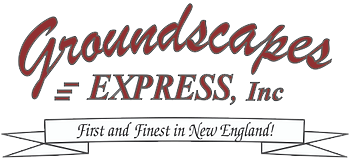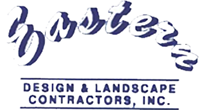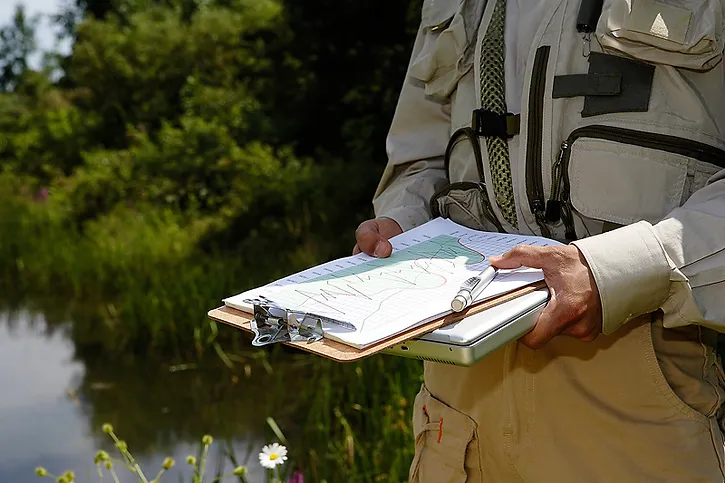We start with connecting ourselves, and through that process anybody who gets involved with the project, with a much deeper understanding of who this place is, how it works and how we can live in it in a way that seeds itself toward increasing health.
The case that gets made as a result of that is so much more extensive, grounded and whole, that when it’s presented to regulators, it goes beyond what they were expecting. It usually ends up educating them about the fact that their regulations are limited and aren’t actually going to be helpful in terms of the larger evolution that’s possible.
Most regulations are intended to limit and stop harmful behavior. Harmful behavior is identified when a problem comes up. The problem is a result of a past set of conditions. So we’re constantly working on the past instead of creating a future. We help people see that if we focus on creating the future, the problems get fixed and they get fixed much more effectively and permanently. So it’s both the wholeness of the understanding of that place and the focus on its potential, combined with the way we have engaged people that creates a difference.
We have, “fallen out of place” and are losing or have lost the once inherent capacity to understand and then establish right relationships, to put ourselves “back in place.”
We are becoming residents rather than inhabitants. Where residency requires only cash and a map, an inhabitant “dwells . . . in an intimate, organic, and mutually nurturing relationship with a place. Good inhabitance is an art requiring detailed knowledge of a place, the capacity for observation, and a sense of care and rootedness.”
Place is intimate, personal, filled with meaning and potential. It grows out of the rich interrelationship of earth energies, biotic energies, and human cultural energies to create a living whole with its own distinctive nature and spirit. When we experience where we live and work as such a place, it becomes a powerful source for the continuing caring required to sustain sustainability.
The next key concept in the phrase is partnering. Place gives us a context for understanding our role as humans on the planet, and it’s really as a partner. For us it’s not just partnering to try to fix things or solve problems. We’re partnering because together we can create something of a much greater order of abundance. Partnering creates an entirely different mindset about how we think about our relationship to nature. As in a human relationship, good partners really understand each other at an essence level. Being a partner to our place requires appreciating and understanding the essence and potential of that place as a whole—its ecological as well as social dimensions, and what it can become if enabled to fully express that essence. When we understand that, we can see who we need to be in relation to that place, what our potential is.
So our work as partners aims to restore those capacities when they are missing or disrupted, whether in ecological or human living systems. s to regenerating human spirit, even if we are called in to deal with a problem, we don’t start there. We start with a process envisioning a way to be in this place given an understanding of what it can become.
“How does this place work? How have you seen it change over time? What is really critical for it being a healthy place to be?” Then, we bring the sciences in and adapt them to enable the evolution of that place. So the first step is recognizing these are not people we have to somehow “include.” They are the sources of new potential. They will have insights that we will never have coming from the outside. If we know how to ask the questions, we can unlock that wisdom and in the process, tap into their spirit. if people have a stake in that aim. Stakeholder engagement is an essential component throughout, though its form changes as appropriate.
We use] the concept of “kitchen table conversations”– but never in an abstract way. It’s always holding the notion of partnering, going to someone because you honestly believe they have some insight and wisdom to share. You use the process of the conversation to help deepen an appreciation for and reawaken a connection to their place and what’s really at the core of that place…what really touches their heart about it and that vitalizes the larger process.
Frustration often results when we’re fixed on moving something forward. We have a job to do, a contract, a timeline, a problem to solve, and we’re the ones who know how to do it. If we start with that mindset, it is guaranteed to lead to frustration. People pick up on that and the situation will continue to deteriorate. If there is no way to avoid these large meetings at the beginning, then you must come with a very deep sense of compassion for this community as a whole, and for the people who stand up and speak. Try to hold the fact that, here’s somebody who cares. Here’s somebody who has energy about something. So let that steam blow off, and then come back around to them – not in the meeting, but individually – and express, “you are someone who has a lot of energy about this. We’d love to talk to you some more.” If they really aren’t connected and this was purely a forum for them to blow off steam on an unrelated issue, they’re going to melt away. But if you look at your project as working on the whole of the place, what seems unrelated may be a source of new potential.
We start with connecting ourselves, and through that process anybody who gets involved with the project, with a much deeper understanding of who this place is, how it works and how we can live in it in a way that seeds itself toward increasing health. The case that gets made as a result of that is so much more extensive, grounded and whole, that when it’s presented to regulators, it goes beyond what they were expecting. It usually ends up educating them about the fact that their regulations are limited and aren’t actually going to be helpful in terms of the larger evolution that’s possible.
Most regulations are intended to limit and stop harmful behavior.
Harmful behavior is identified when a problem comes up. The problem is a result of a past set of conditions. So we’re constantly working on the past instead of creating a future. We help people see that if we focus on creating the future, the problems get fixed and they get fixed much more effectively and permanently. So it’s both the wholeness of the understanding of that place and the focus on its potential, combined with the way we have engaged people that creates a difference.
If you’re starting off the conversations at the traditional, architectural programming level, which is “what are all of the functions you need or want to be doing in the future and therefore what’s needed?” you are in the world of things, which is where we have most of our arguments. It’s the state of mind and being that you bring into this that can shift how people engage with it. It’s so critical. It feels subtle to people, yet when they experience this, it’s makes an enormous difference. Rather than looking at the university as a collection of things—buildings, infrastructure, classrooms, etc., it’s getting people to think about what’s really the essence of this university as a living system. Why have you come to this university to teach here, be a student here, to be an administrator here? What is it that is really core to this place, and how has that touched you? What’s the core set of qualities that make this place really special? That’s what we call looking for the essence of the place, and that then becomes the source for reconciling differences.
In development we often get lost in fascination with all of the do-dads, the physical amenities and lose what a place really is about. Development becomes a continuous process of small compromises as we start with an ideal and then meet the physical reality. When we are working with a collective appreciation of what core to a project and a place, what is real, we can find creative reconciling solutions. So you start with connecting people at a spirit and essence level with what needs to be preserved and enhanced for the university as a whole to evolve its distinct identity and ability serve all its stakeholders.
Let’s look at systems thinking vs. conventional thinking. Conventional thinking is based on using our five senses to gather data. When this is the source of our thinking, we’re trapped in a world made up of separate physical objects, because that’s the way our senses perceive the world. We’re looking at something that has already come into existence and is now in a process of decay or degeneration. This elemental thinking is good for fixing problems. But if we’re continuously fixing problems, we’re never participating in creating something new into existence. And if we can’t “see” the larger systemic dynamics that are creating the problems, we can’t see what’s sourcing the problem or what are the systemic consequences of our solutions.
Systems thinking is much closer to understanding how the universe actually works, but it requires a different mind to “see” that reality. When we look through the elemental mind we see a world of things. When we look through the systems mind, which is our imaging mind, we “see” dynamic sets of interrelationships and patterned flows of energy that are continuously evolving toward increasing levels of complexity. We recognize the complexity and richness of life.
Living systems thinking shares that aspect of systems thinking, but unlike the cybernetics branch of systems thinking as a discipline, it is more focused on understanding how life works in a specific situation than on being more systemic in solving our problems. Living systems thinking enables us to align ourselves more effectively with the evolution that is going on (or wanting to go on) around us so we can enable, rather than disenable it. Most of the time we get in the way of nature’s desire to continue to evolve, but if we can understand better how that works, that’s when we can become effective partners. If we are called in to deal with a problem, we don’t start there. We start with a process envisioning a way to be in this place given an understanding of what it can become.
We, at Groundscapes Express, Inc., have been practicing and educating Regulators, Conservation Commissions, and the design professionals about Ecological Site Design, stormwater management, soil health in respect to the soil ecology, erosion, and sediment control for at least a decade now!
So how come we still get feed – back that shows that there is no understanding of what we have been demonstrating for all these years?
We can understand if it is that they were taught ways of solving these problems that have now become obsolete, or if they don’t want to address water quality and air quality when they design landscape sites?
Let’s begin with “hired / contracted” government inspectors:
The first issue that I have is why we, (the people) need the extra cost of an outside agent to inspect government projects when we, (the people) are already paying for our government workers to meet all of their responsibilities within the given yearly budget! Secondly who are these inspectors? What qualifies them to understand the regulations that grew out of many years of adjusting to the new science and standards of the day. The new science is not static and is evolving along with new understandings as they emerge from new information as it becomes part of a new body of knowledge.
Our work takes place and has taken place mainly within the Charles River Watershed, for over twenty- five years.
This living landscape is what we have come to know and understand intimately, with a “hands -on, down in the dirt” perspective. We have compiled scores of evidence – based knowledge, a sort of indigenous knowledge for the twentieth / twenty-first century. We didn’t learn about it from a book, a class, a picture, a Google image, we learned about it from hard core facts of trial and error. We think that we have a good working knowledge of just how our “indigenous” living landscape operates, with human interaction being a very large component.
We have learned that the living landscape is nested within the Charles River Watershed, which is nested within a specific Bio – Region, and everything that happens here only happens here, it is based on our understanding of the evolution of the watershed including human land use adaptations over time that have created the conditions that we are now faced with.
What is currently depleting the “Health” of our watershed and how can we play a value-adding role in the land management process by contributing to the conditions that can restore and enhance its health?
We construct a “story of place”, upon a thorough assessment of the site, before we design or implement a response. We have developed tools that are specific to the bio-region and we implement practices that are specific to the conditions of the specific site as we are asked to participate in its health.
The living landscape and the Charles River Watershed are complex living systems and cannot be addressed with twentieth century abstract methods and “Best Management Practices.”
The use of computers has enabled us to understand complex living systems, so why are we still holding our standards to this outdated understanding?
We have made our living and have spent every waking hour working with the dynamics of the larger living landscape for many decades observing, exploring our living landscape. This time spent has offered us a unique perspective as to what are causing problems to this landscape? Human development processes and patterns and what are the consequences from these processes, and how do they effect the Charles River watershed and how well it functions in providing health and vitality to all of its “living communities”?
The principles and the patterns that we have become intimate with offer us an understanding that is “native to our place” an indigenous understanding that cannot be learned any other way.
So what qualifies “the Inspectors”?
They may have an understanding of the regulations, these regulations were written when land management was described as fragmented knowledge of physical and chemical phenomena and processes, not living biological-geological-chemical systems. We will attempt to communicate what we have learned by working in partnership with natural processes over a quarter of a century in a known bio – physical field, the Charles River Watershed. With our imaging mind, we “see” dynamic sets of interrelationships and patterned flows of energy that are continuously evolving toward increasing levels of complexity. We recognize the complexity of the Charles River Watershed, which has offered us a rich life of beauty and joy!
We also read the literature and work together with our regulators to communicate our learned knowledge so we can all comply with Nature’s Regulations and also satisfy the State.


